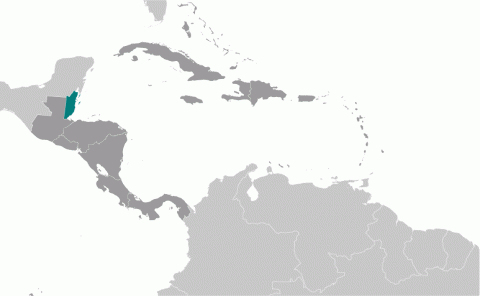Child Labor and Forced Labor Reports
Belize


Moderate Advancement
In 2024, Belize made moderate advancement in its efforts to eliminate the worst forms of child labor. Belize raised its compulsory education age from 14 to 16 years old. Additionally, the government significantly expanded the Education Upliftment Program to reach almost half of all secondary school age children nationwide. Furthermore, the labor inspectorate conducted inspections in targeted sectors and rural areas of the country that included awareness-raising campaigns on child labor regulations, penalties, and the importance of timely reporting about rights violations. However, despite these efforts, Belize does not meet international standards on the prohibition of hazardous work for children because its hazardous work list has not been signed into law. In addition, Belize has not adequately prohibited the use of children in illicit activities, including the production and trafficking of drugs.
| Children | Age | Percent and Population |
|---|---|---|
| Working | 5 to 14 | 1.6% (1,405) |
| Hazardous Work by Children | 15 to 17 | Unavailable |
| Attending School | 5 to 14 | 94.5% |
| Combining Work and School | 7 to 14 | 1.2% |
| Sector/Industry | Percent of Population |
|---|---|
| Agriculture | 24.6% |
| Industry | 10.5% |
| Services | 64.9% |
| Sector/Industry | Activity |
|---|---|
| Agriculture | Farming, including sowing, planting, weeding, maintaining farmland, harvesting, and clearing for bananas, citrus fruits, and sugarcane; fumigating with herbicides and insecticides; and operating machinery, including tractors, vehicles, and small planes. Butchering and raising livestock. Fishing, diving to clear snagged nets, and using sharp tools. |
| Industry | Construction, forestry, and lumber, including carrying heavy loads, carpentry, masonry, wood carving, and working in sawmills. Operating power tools and working with electricity without proper training and supervision, and working at dangerous heights without safety harnesses. Quarrying, including operating machinery. Building and repairing fishing vessels, utilizing dangerous chemicals and other substances. |
| Services | Street, wholesale, and retail vending. Yard work, including using lawnmowers, weed eaters, and machetes. Domestic work, including cleaning and providing childcare services. Food services, including cooking, using large mixers, and grilling. Working in the tourist sector, including in food and alcohol services and hospitality, and as tour guides, maintenance personnel, and security guards. Working in auto repair, including as workshop mechanics and repairing tires. Welding. Transportation, including working as bus attendants, collecting fares, carrying heavy loads, and pumping gas. |
| Categorical Worst Forms of Child Labor‡ | Commercial sexual exploitation, sometimes as a result of human trafficking. Forced labor in food services. Use in illicit activities, such as the trafficking of drugs, weapons, and contraband goods, and engagement in theft, burglary, and assault. |
‡ Child labor understood as the worst forms of child labor per se under Article 3(a)–(c) of ILO C. 182.
Children at Higher Risk
In Belize, girls and children from other Central American countries are most at risk for the worst forms of child labor. Girls are at risk of human trafficking and commercial sexual exploitation. Some children and asylum seekers are vulnerable to forced child labor as a result of not having identification documents and work authorizations. Mennonite children are involved in hazardous tasks, such as operating machinery, tractors, and small planes, and fumigating with herbicides and insecticides. Minors, especially boys between the ages of 10 and 15, are engaged in illicit activities such as trafficking and selling drugs throughout the country and weapons in the Belize City area. Gangs also coerce male minors into theft, burglary, assault, and the assassination of rival gang members.
Barriers to Education Access
Belize lacks an adequate number of qualified teachers, properly equipped facilities, and sufficient supplies. In particular, schools are not furnished with chalk boards, pens, paper, or internet access. Low pay and fear of violence contribute to the shortage of teachers. Access to education is also hindered by the cost of school fees, textbooks, uniforms, and meals. Government subsidies toward educational expenses are used by 60 percent of high school students, but subsidies do not fully cover the mentioned fees. For children outside of Belize City, Toledo, and Stann Creek, access to subsidies is not automatic and is conditioned by an application process. As a result of local administrative interference, funds do not always reach all qualifying students. Access to education also may get delayed if children are lacking or missing identification documents. However, there were no such cases registered during the reporting period.
| Standard | Age | Meets International Standards | Legislation |
|---|---|---|---|
| Minimum Age for Work | 14 | ✓ | Articles 2, 54, 164, 169, and 172 of the Labor Act; Articles 2 and 3 of the Shops Act |
| Minimum Age for Hazardous Work | 14 | ✗ | Articles 2 and 7 of the Families and Children Act; Articles 2, 54, 169 and 172 of the Labor Act |
| Identification of Hazardous Occupations or Activities Prohibited for Children | ✗ | ||
| Prohibition of Slavery, Debt Bondage, and Forced Labor | ✓ | Article 8 of the Constitution; Articles 157, 158 and 199 of the Labor Act; Articles 2 and 11 of the Trafficking in Persons (Prohibition) Act | |
| Prohibition of Child Trafficking | ✓ | Articles 2, 3 and 11 of the Trafficking in Persons (Prohibition) Act; Article 9 of the Commercial Sexual Exploitation of Children (Prohibition) Act | |
| Prohibition of Commercial Sexual Exploitation of Children | ✗ | Articles 2, 11, 13, and 14 of the Trafficking in Persons (Prohibition) Act; Articles 2–9 of the Commercial Sexual Exploitation of Children (Prohibition) Act; Articles 49–51 of the Criminal Code | |
| Prohibition of Using Children in Illicit Activities | ✗ | ||
| Minimum Age for Voluntary State Military Recruitment | 18 | ✓ | Article 16 of the Defense Act |
| Prohibition of Compulsory Recruitment of Children by (State) Military | N/A* | ||
| Prohibition of Military Recruitment by Non-state Armed Groups | ✗ | ||
| Compulsory Education Age | 16 | ✓ | Education and Training (Amendment) Act №3; Articles 2 and 59 of the Education and Training Act; Articles 2 and 34 of the Education Act. |
| Free Public Education | ✓ | Articles 49 and 70 of the Education and Training Act; Article 45 of the Education Act |
* Country has no conscription
In 2024, Belize amended its compulsory education age from 14 to 16 years old. However, the country did not also raise its minimum working age, which remains at 14. As the minimum age for work is lower than the compulsory education age, children may be encouraged to leave school before the completion of compulsory education. While Belizean law sets the minimum legal age for work in wholesale and retail trade or business at age 14, the law is inconsistent with international standards on light work. There is no formal definition of such work, and types of light work permissible for children ages 12 to 14 have not yet been identified. Belizean law is also inconsistent with international standards on hazardous work, as children over age 14 may work in industrial undertakings—including in activities such as mining, manufacturing, and construction. In addition, although Belizean law indicates that children under age 18 are prohibited from being employed or engaged in any activity that may be detrimental to their health, education, or mental, physical, or moral development, the law does not specify which employment activities are detrimental to children. A list of hazardous work prohibited for all children has not been adopted as law. The Commercial Sexual Exploitation of Children (Prohibition) Act and the Criminal Code prohibit all forms of child sexual exploitation, with the former explicitly prohibiting child pornography and pornographic performances. However, a person in a consensual relationship with a child over 16 is permitted to give or promise remuneration, goods, food, or other benefits in exchange for sexual acts. This provision leaves children vulnerable to use in prostitution. Belizean law does not contain a prohibition on the use of children in specific illicit activities, including the production and trafficking of drugs and firearms.
| Organization/Agency | Role & Activities |
|---|
| Ministry of Rural Transformation, Community Development, Labor, and Local Government: Enforces child labor laws through its Department of Labor. Coordinates with other agencies on child labor reporting, monitoring, and enforcement activities. In 2024, the Department of Labor launched an awareness-raising video on ending child labor created by local high school students. Domestically, the Department of Labor continued engaging with the business community on child labor, signing a memorandum of understanding with the Northern Sugarcane Growers Association. On the regional level, the Department of Labor received a delegation from Brazil to exchange best practices in legal reforms, labor inspections, and monitoring child labor cases. |
| Ministry of Human Development, Families, and Indigenous People's Affairs: Enforces criminal laws through its Department of Human Services and Department of Child Protection regarding forced child labor, child trafficking, commercial sexual exploitation, recruitment and use of child soldiers, and use of children in illicit activities. It has a case management system, using special software. In 2024, the Ministry provided rehabilitation and reintegration services to children rescued from exploitative situations and supported children in vulnerable communities through social programs. The Ministry focused on ensuring the referral mechanism works for vulnerable children, and that after being referred, children receive necessary care services. |
| Overview of Enforcement Efforts | 2024 |
|---|---|
| Has a Labor Inspectorate | Yes |
| Able to Assess Civil Penalties | Yes |
| Routinely Conducted Worksite Inspections | Yes |
| Unannounced Inspections Permitted | Yes |
| Has a Complaint Mechanism | Yes |
| Imposed Penalties for Child Labor Violations | No |
| Conducted Criminal Investigations for Worst Forms of Child Labor Crimes | Yes |
| Imposed Penalties for Worst Forms of Child Labor Crimes | No |
In 2024, 28 labor inspectors conducted 834 worksite inspections and found 0 child labor violations. The government also conducted 8 investigations into suspected worst forms of child labor crimes, initiated 1 prosecution, and convicted 1 perpetrator.
| Coordinating Body | Role & Activities |
|---|
| National Child Labor Committee (NCLC): Coordinates efforts among ministries to prevent and eliminate child labor and implement the National Child Labor Policy. Led by the Ministry of Rural Transformation, Community Development, Labor, and Local Government and 14 government and civil society members. It includes the Child Labor Secretariat and Inspectorate, which identifies, coordinates, and reports on all child labor activities. During the reporting period, NCLC used its community outreach and campaigns to raise awareness to prevent child labor. NCLC organized events to amplify knowledge on children's rights and welfare, including the National Children's Parliament. |
| Policy | Description & Activities |
|---|
| National Child Labor Policy and Strategy (2022–2025): Aims to reduce incidence of child labor in Belize and take significant steps to eliminate the worst forms of child labor by 2025. Prioritizes addressing legislative and information gaps, increasing child labor law compliance, reducing barriers to education, and preventing child labor by ensuring adequate support. Includes feedback from 25 entities on the effectiveness of existing policies on child labor for potential improvements, and is funded by ILO, UNICEF, and the Government of Belize. Quarterly meetings on the status of policy implementation will be organized under the National Child Labor Committee, with detailed output and outcome-based reports to be issued at the end of each meeting. Recommends raising the minimum age for work. While the policy contains a detailed list of hazardous work activities and conditions and a light work list, they are not legally enforceable. The National Child Labor Policy and Strategy has a special focus on improving educational access. The Belize Educational Upliftment Project added 21 high schools across the country, benefiting approximately 50 percent of the secondary school population in 2024. The government allocated $2 million for school supplies, uniforms, clothing, food, and transportation for the children in the south side of Belize City and the Toledo District. |
| Care Model: Coordinates the protection, care, and monitoring of sexually exploited and trafficked children. Outlines the role of the Department of Human Services and the Belize Police Department in receiving allegations of commercial sexual exploitation of children and referring children to services. It was active during the reporting period, however, the research was unable to determine what activities were undertaken during the reporting period under this policy. |
† The government has other policies that may have addressed child labor issues or had an impact on child labor.
| Program | Description & Activities |
|---|
| National Healthy Start Feeding Program:‡ The Ministry of Education, Culture, Science and Technology, through its Student Welfare Unit, funds and coordinates school feeding programs in under‐resourced communities. In March 2025, the program was substantially expanded to cover 75 schools across the country, which benefited close to 15,000 students. The participating schools provided one meal daily 5 days per week. Schools received $1.50 per child per meal to procure food supplies and compensate kitchen staff. The Ministry launched a QR code lunch app in high schools to gather data on school attendance. This data will be integrated into the Belize Education Management System helping to assess the efficiency of the program and support decisions for its future expansion. The program was funded with assistance from the Government of the Republic of China (Taiwan). |
| Building Opportunities for Our Social Transformation (BOOST):‡ A co-responsibility cash subsidy program for the most vulnerable groups of people who meet several conditions. The conditions include a minimum yearly school attendance rate of 85 percent and immunization and pre-natal screenings for pregnant women. Qualifying applicants receive $21-41 ($44-$82 BZD) cash stipends per month per child depending on the family situation assessment. The program was relaunched in April 2024 after a temporary pause. |
‡ Program is funded by the Government of Belize.
| Area | Suggested Action |
|---|---|
| Legal Framework | Raise the minimum age for work of 14 to align with the compulsory education age of 16. Adopt legislation to prevent children below 12 years of age to be employed to perform light work, and specify the activities in which light work may be undertaken by children of an appropriate age. |
| Adopt a list of hazardous occupations and activities prohibited for children and ensure that all children under age 18 are prohibited from engaging in hazardous work. | |
| Criminalize the use of children aged 16 and 17 for prostitution, including giving or promising remuneration or other benefits for the purpose of carrying out a sexual activity with a child, regardless of whether the person is in a relationship with the child. | |
| Legally prohibit the use of children in specific illicit activities, including the production and trafficking of drugs. | |
| Criminally prohibit the recruitment of children under age 18 into non-state armed groups. | |
| Enforcement | Ensure that the labor inspectorate is fully funded and adequately staffed with a sufficient number of inspectors to conduct inspections throughout the country and across sectors. |
| Implement a digital tracking system for the labor inspectorate. Publish complete information on enforcement efforts to address child labor and labor inspectorate funding. | |
| Ensure that law enforcement agencies have sufficient resources, including vehicles, fuel, and personnel to conduct criminal investigations, including in rural areas and in close cooperation with the Anti-Trafficking Police Unit, and that courts have personnel, including judges, to hear and try human trafficking cases in a timely manner. | |
| Conduct inspections across sectors, including targeted inspections in sectors most at risk for child labor, such as mining, quarrying, domestic work, and tourism, as well as in at-risk communities, including Mennonite communities. | |
| Prosecute and impose criminal penalties for the worst forms of child labor, including for government officials. | |
| Improve transparency regarding the status of child labor complaints that are being investigated. | |
| Government Policies | Publish activities undertaken to implement key policies related to child labor, including the CARE Model, on an annual basis. |
| Social Programs | Conduct a comprehensive national survey on children’s work activities to determine whether children are engaged in or at risk of involvement in the worst forms of child labor, to inform policies and programs. |
| Provide targeted social programs to reduce the vulnerability of girls and LGB youth to trafficking in persons and commercial sexual exploitation, including how to report crimes. | |
| Increase access to education by eliminating fees, improving educational facilities, hiring additional qualified teachers, and providing textbooks, uniforms, and meals. | |
| Plan and deliver educational and awareness-raising campaigns in Mennonite communities on the harm hazardous tasks cause to children, and reasons these tasks should not be fulfilled by children in the future. | |
| Implement programs to address the commercial sexual exploitation of children and programs to assist children working in agriculture, fisheries, and construction. | |
| Provide special targeted support to children without identity documents and asylum-seekers to prevent child labor exploitation. |




